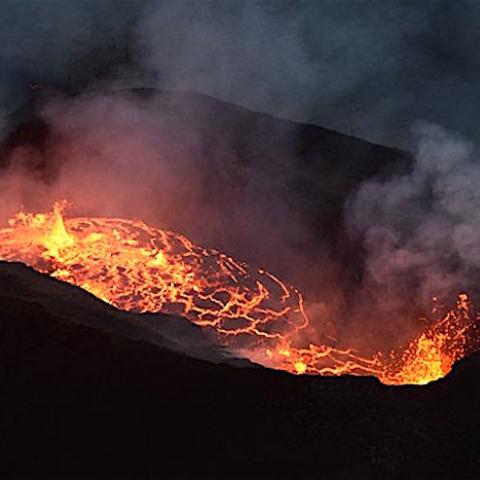
It's nesting season for endangered nēnē at Hawai'i Volcanoes National Park, and visitors are being urged to watch out for the geese/NPS, Janice Wei
It's breeding and nesting season at Hawai'i Volcanoes National Park for nēnē, and park visitors are urged to drive with caution and to give the endangered Hawaiian goose space.
Nēnē, the largest native land animal in Hawai'i, are present in the park and other locations on Hawai'i Island year-round, but this seasonal window is vital for their survival, and it's also when they are the most vulnerable to being run over by drivers. While getting ready to nest, the geese are focused on eating, and often forage from dawn to dusk. They blend in with their surroundings, and in low-light periods, they are especially hard for motorists to spot.
"One of the most important things people can do is give nēnē space," said Kathleen Misajon, Nēnē Recovery Program manager at Hawai'i Volcanoes National Park. "This means not approaching them and never feeding them. Nēnē are easily habituated to food hand-outs from people and vehicles, and these birds often fall victim to vehicle strikes."
Nēnē crossing signs posted throughout the park call attention to roadside areas frequented by nēnē. These include sections of Highway 11, Crater Rim Drive, and Chain of Craters Road. Motorists are urged to use extra caution in signed nēnē crossing areas, and to obey posted speed limits.
By 1952, only 30 birds remained statewide. Hawai'i Volcanoes National Park began efforts to recover the species in the 1970s. The Nēnē Recovery Program continues today, and more than 250 birds thrive in the park from sea level to around 8,000 feet. As many as 2,500 nēnē exist statewide.
"While we have had success protecting nēnē and maintaining the population in the park it is so important that humans keep a respectful distance from the geese, especially during this sensitive time. We advise visitors to keep at least 60 feet away from nēnē, any time of year," Ms. Misajon said.
Wild nēnē, the world's rarest goose, are only found in Hawai'i and are the last survivor of several other endemic geese. Their strong feet sport padded toes and reduced webbing, an adaptation that allows them to traverse rough terrain like lava plains. Most nēnē fly between nighttime roosts and diurnal feeding grounds. The female builds a simple ground nest and incubates one to four eggs for a full month while her devoted mate acts as a sentry. Shortly after they hatch, goslings leave the nest and follow their parents to their traditional foraging grounds which can be more than a mile away. At 14 weeks, nēnē can fly, and along with their parents, they join large flocks where they meet their relatives and potential mates. They usually mate for life.



 Support Essential Coverage of Essential Places
Support Essential Coverage of Essential Places







Comments
They're cute, they're protected, and they are really really dumb. I hope folks will be specially careful at this time.